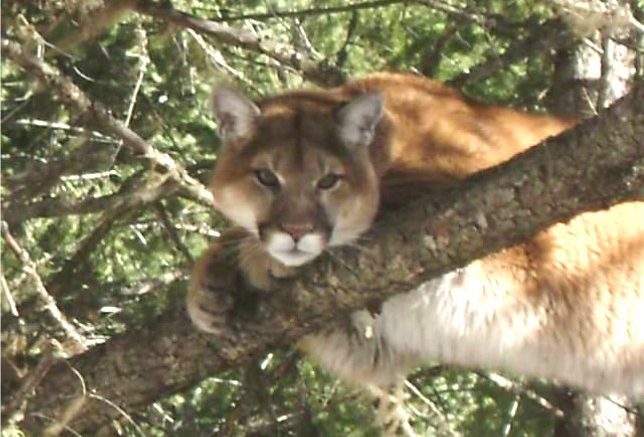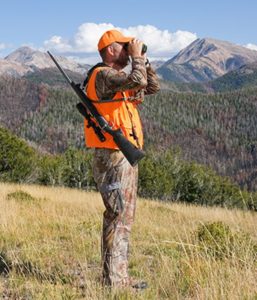By Danielle Nason
There have been several mountain lion sightings within Libby city limits in 2018. Citizens may be wondering what the Department of Fish, Wildlife and Parks (FWP) is doing about this problem.
What can they tell us about living in a town where there are wild animals roaming freely among us?
FWP spokesman, Dillon Tabish (Information and Education Manager), says to please remember the following when dealing with a mountain lion encounter or sighting:
“There are a lot of wild animals in northwest Montana. Montana is one of the most intact wild ecosystems in the world. Living here, we live among wild animals and we come into contact with them at times. The FWP takes reports and sightings seriously, and responds to mountain lion sightings immediately where there is a threat to public safety or property. If you see a mountain lion, call 293-4112 ext. 0, as soon as possible any time day or night.”
It is important to remember that a sighting of a mountain lion does not necessarily mean that an attack is likely to occur. Per the FWP, mountain lions that are sighted that are not aggressive are left alone. Keep in mind, that mountain lion attacks on people are extremely rare. Most mountain lions will try to avoid confrontation. Always give them a way to escape and do not approach a cornered or scared mountain lion under any circumstances. Once a mountain lion becomes accustomed to being around people and is not afraid of people in general, then people can easily turn from hunter to hunted. Always be aware of your surroundings and do not hesitate to call for help.
“If a mountain lion is sighted stalking a person or showing aggressive predatory behavior, report the incident immediately to the Department of Fish, Wildlife and Parks. Upon receiving information of a mountain lion sighting, the FWP will send out a Game Warden or Biologist to the reported site. They will locate the mountain lion and inspect the situation before deciding upon the best action for removal of the cat.”
The FWP has implemented a removal process for sighted and proven predatory mountain lions. For some animals the removal process is much more humane than others. Bears, for instance, if they have no prior history of human conflict, can be moved and released in remote locations that are uninhabited or sparsely populated. Unfortunately for mountain lions, the removal process is not so simple.
Mountain lions learn differently than bears and do not learn from or change their behavior based on past encounters or experiences. Once they become food conditioned or accustomed to seeing people regularly, they stop fearing humans and are more likely to return to populated areas. These cats can become aggressive or a nuisance to children, animals and people in general.
Photo courtesy of Dillon Tabish, FWP
At this point, the only action is to have the mountain lion euthanized to prevent harm or danger to the surrounding community.
FWP is requesting public review and comments on a draft mountain lion management strategy. Supporting information on the strategy can be found on their website under, “Opportunity for Public Comment” at fwp.mt.gov/hunting/.
“The FWP is committed to maintaining sustainable lion populations in all suitable habitats of our state. Over the last 25 years, FWP has made significant investments in field research that helps inform us on lion management. With this and research done in other states and provinces, we propose to use the latest science and state-of-the-art methods and tools to monitor Montana’s lion populations. FWP has completed a draft Montana Mountain Lion Management Strategy as an important component of lion management. Because we know lion populations function in big landscapes, our approach includes defining four Lion Ecoregions in Montana, large landscapes of similar habitat within which populations perform similarly.”
“FWP will periodically develop estimates of mountain lion numbers within the northwest, west-central and southwest ecoregions using a genetically based field sampling method known as Spatial Capture-Recapture, or SCR. This is a relatively new but well-proven method for estimating populations. Using these population estimates plus our understanding of lion ecology and lion harvest data, managers will employ a sophisticated statistical model known as an Integrated Population Model, or IPM, that integrates all the information to predict the effects of lion harvest on populations.
Over time, this monitoring program will reduce uncertainty about the effects of lion harvest and improve FWP’s ability to meet management objectives. The draft strategy does not lay out any population objectives or harvest recommendations, but only speaks to guidelines about how FWP will manage and monitor lions.”
As far as reducing conflict with lions, the best safe practice recommendations offered by FWP are as follows:
If you encounter a mountain lion: Don’t run and never take your eyes off the animal. Stand tall, looking as big as you can and throw anything within reach at the animal. Be as loud as you can, yelling and waving your arms. A cougar’s instinct is to chase, so pick up small children to reduce the risk of the child panicking and running. You want the animal to think that you are a predator so that the cougar will see you as a potential danger and back down from an attack.
Do not crouch or bend over, this makes you look similar to a four-legged animal of prey.
Here are some precautionary measures that FWP everyone take while living with cougars:
(1) Hike in small groups and make a lot of noise.
(2) Keep home exteriors or outside food preparation and storage areas clean of food debris and remnants of food or animal waste.
(3) Don’t approach a dead or partially debris covered animal in the wild, especially if there are drag marks nearby. This shows it may have been a fresh kill and the kill could be cougar prey left for a later meal.
(4) Don’t feed wild animals that cougars’ prey upon. Where a deer goes, a mountain lion may follow.
(5) Use motion censored lights in dark areas or yards backing up against wooded areas. Always carry bear spray or pepper spray when you are outdoors
What can you do as a citizen? First and foremost, be informed. The more knowledge you have about living with mountain lions and their characteristics, the more comfortable and safer you will be in mountain lion country. Sometimes knowledge is not enough, and physical action is needed to defend yourself. If you have a firearm and know how to use it safely and effectively, Montana law allows you to kill a mountain lion to defend yourself, another person or a domestic dog. If you do kill a mountain lion, you must report it to FWP within 72 hours.
If you are a hunter who has killed a mountain lion, be sure to report it immediately as well. Per the 2018 Mountain Lion Montana Hunting Regulations, hunters must personally report their mountain lion kill within 12 hours by calling the mountain lion reporting line at 1-877-FWPWILD (1-877-397-9453) or 406-444-0356.


